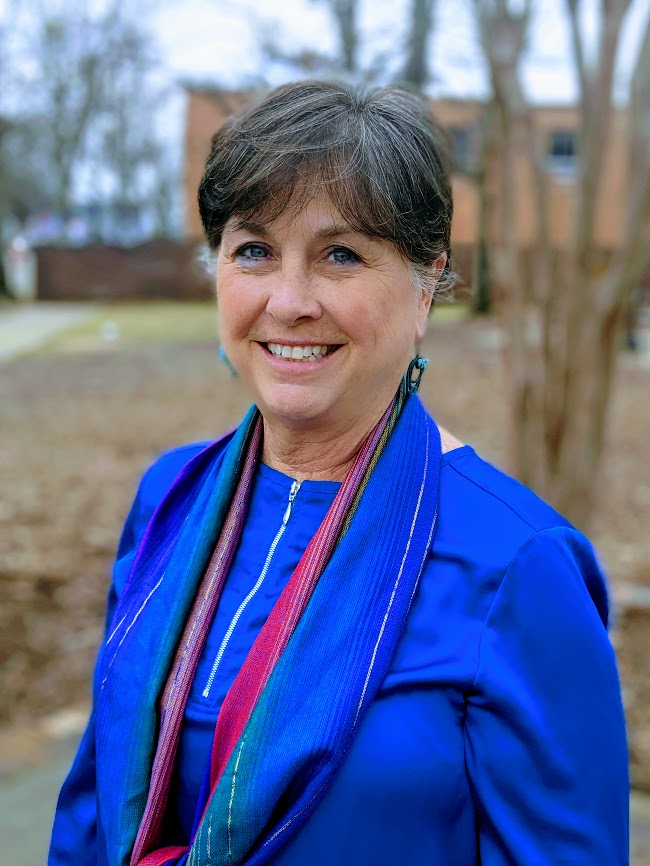In recognition of the year 2020 and the significance of 20/20 in the field of optometry, the UAB School of Optometry is recognizing alumni whose careers have impacted communities, set precedents or moved the profession forward in some way. With this in mind, meet Mary Jean Sanspree, PhD, retired UAB School of Optometry faculty member. Sanspree served as director and associate scientist of education and outreach in vision research at the school. She was part of a team that saw a need for eye care in Alabama’s Black Belt. After being awarded multiple grants to initiate a longitudinal study about eye health in our Black Belt counties, outreach to the Black Belt that continues today through Community Eye Care (CEC) began.
What is your relationship with UABSO? I am retired from UABSO as faculty, director and associate scientist of education and outreach in Vision Science Research. I have served on the Dean’s Advisory Committee, the 50th Anniversary Committee, and now a member of the Dean’s Strategic Advisory Committee. I am also a donor to UABSO for rural eye care.
How long have you been affiliated with the school? Through my UAB years, since 1991. In earlier years, when I was a teacher of the blind in the 1970s and 1980s, when I was education director at Callahan Eye Foundation when I trained teachers of the visually impaired at UAB School of Education, worked at Spain Rehabilitation and when I was director of a low vision center, I was affiliated with the Low Vision Clinic for referral of patients and support group meetings. I guess I have been affiliated with UABSO my whole career.
Describe your career path as a vision scientist. When I worked in the UABSO Low Vision Clinic, I was asked to move to the VSRC as education and outreach director to work with the NIH National Eye Institute to bring the traveling vision exhibit to the McWane Center when it opened. Afterward, we saw a need for eye care in Alabama’s Black Belt and we were awarded grants from the CDC, Lions Clubs International, Vision Service Plan, and Central Alabama Community Foundation to initiate a longitudinal study about eye health in our Black Belt counties. The outreach and education at VSRC partnered with many centers around UAB campus and the Alabama Department of Public Health to complete the research and determine the needs for eye care there.
Who/What influenced the direction of your career? My father was active in Lions Clubs and worked with Alabama Lions Sight very closely. My high school physics project centered on the retina and the effect lights had on the electrical impulses of the retina. Dr. Alston Callahan allowed me to work with a resident who was learning about the Electro-retinogram that measures light-sensitive cells in the eyes. So, of course, I was hooked on vision care. So, my dad and Dr. Callahan were very important in my career path.
How did you get involved with Community Eye Care? When the research in the Black Belt was completed, we realized that the interns were getting much experience with so many patients at the Black Belt clinics. So, the Community Eye Care picked up the work in combination with VSRC with grant assistance from the EyeSight Foundation of Alabama. The patients received comprehensive eye examinations once a year per county and glasses were provided at no cost. The program has been a boost for access to care in counties where there are no eye physicians due to geography and economic barriers.
Would you ever have thought your career would take this direction? Why or why not? I have always believed that my God-given talents would be used to help others as long as I remained open to challenges, change, and adventures! It seems that my career has allowed me to be a missionary in my own community thus making every day a new way to give to others. I feel that if my work isn’t fun and joyful, then it isn’t where I should be.
In what ways has your career path been rewarding or why this path a good fit for you? My background in speech and hearing pathology, visual impairments, and leadership has allowed me to serve people who are in a low incidence population of sensory loss. Working with infants, school-aged children, and adults have permitted me to learn every day and go to places that I never would have dreamed of going. Volunteering for Helen Keller International in the Caribbean to train teachers, training teachers in Jamaica for Rotary grants, and being a part of the Helen Keller Birthplace Foundation in Tuscumbia have given me so much joy and many caring friends. Working with the International Council for Exceptional Children to assist with legislation affecting children with vision and hearing loss has been a wonderful experience as has the Helen Keller Art Show that has been active since 1984.
What is the main takeaway from your experience? I have loved my career and wish that others can have the wonderful times I have been allowed to enjoy. I encourage others to give back to UAB School of Optometry or another venue where the heart feels a love. By sharing time, talents, and dollars, we can open doors for the future professionals to reach out to others to make a difference.
